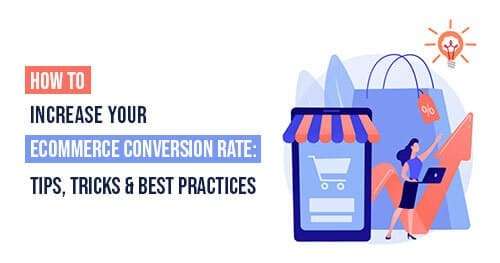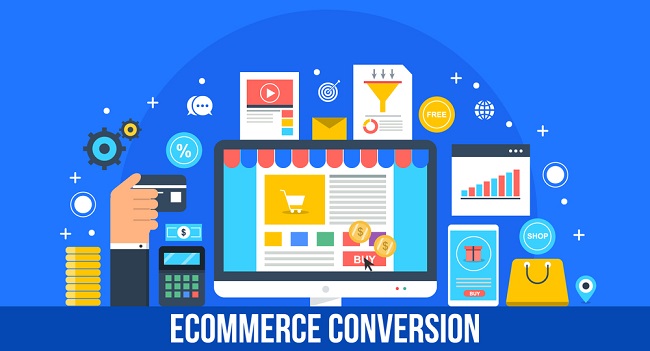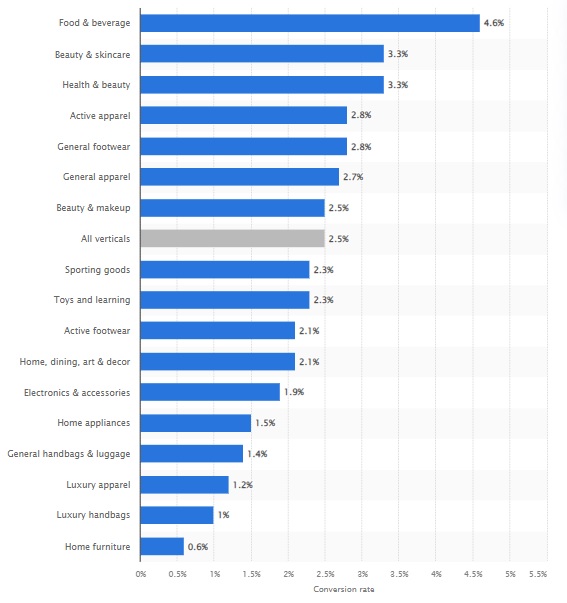
Boosting Ecommerce Sales With Conversion Rate Optimization
With the increasing trend of customers preferring online shopping, businesses must ensure that their website provides a seamless and satisfactory shopping experience. However, having high website traffic is not enough, as a low ecommerce conversion rate means customers are not completing purchases. Therefore, to improve the performance of an online business, it is crucial to focus on the ecommerce conversion rate.
To address this, it is essential to analyze every element of the customer journey, from the landing page to the checkout, and make the necessary optimizations to improve the conversion rate. By doing so, businesses can effectively increase their revenues and succeed in the competitive world of ecommerce.
Driving customers to your ecommerce site is no easy process in such a competitive marketplace. As a result, retailers and brands must step up their strategy to improve their ecommerce conversion rate. Enhancing the average ecommerce conversion rate is crucial for profitability and developing a loyal clientele.
What is the ecommerce conversion rate?

The percentage of users who take action on a website is called the ecommerce conversion rate. It is the proportion of transactions to website sessions. Among the most desirable types of conversions for ecommerce sites is the purchase. However, different kinds of actions are also included in conversion rates.
The ecommerce conversion optimization includes:
- Completing a lead-generation form.
- Contacting customer service.
- Subscribing to an email newsletter.
- Downloading an asset.
- Engaging in another way.
Conversation rates provide information about how customers interact after visiting your website.
Why don't ecommerce shoppers convert?
Although online shopping is becoming increasingly popular, many online shoppers never become paying customers.
There are several reasons for this possibility, including:
- Poor website design and user experiences, such as slow page loading times or complex navigation.
- Inadequate or unclear product information, including images, descriptions, and reviews.
- Lack of trust, including concerns about security and privacy and unfamiliarity with the brand or company.
- High shipping costs or long delivery times.
- Complicated checkout processes, such as those requiring too much information or too many steps.
- A lack of mobile optimization can lead to frustration and difficulty when shopping on a mobile device.
- Limited payment options or payment gateway errors.
- Technical issues, such as website errors or crashes.
- Ineffective or insufficient marketing and advertising strategies.
- The availability of better deals or more appealing options on competitor websites.
To increase the ecommerce conversion rate, businesses need to address these issues and provide their customers with a seamless, trustworthy, and competitive shopping experience. It may involve changing website design and functionality, providing more options for customers, improving security measures, and implementing effective marketing strategies.
How to calculate average conversion rate for ecommerce
To calculate your average ecommerce conversion rate, divide the number of visitors who made a purchase (or another desired action) by the overall number of site visitors. Then, multiply the result by 100.
Here's the formula:
ecommerce conversion rate = (total visitors who purchase / total website visitors) x 100
For example, assume a website receives 400,000 unique visitors monthly and 5,000 visitors purchase.
(5,000 / 400,000) x 100 = 1.25% conversion rate
According to Statista, ecommerce sites selling food and beverages had the highest online conversion rates in the last quarter of 2022, with over 4.5 percent of visitors making a purchase. In addition, websites selling skin care and health and beauty products had conversion rates of around 3 percent each, following the food and beverage sector.

Knowing a website's average ecommerce conversion rate is essential for measuring the effectiveness of marketing and advertising campaigns, identifying areas for improvement in the customer journey, and making data-driven decisions to increase sales and revenue.
The average conversion rate for ecommerce varies by industry, and many factors can impact conversion rates, including website design, product selection, pricing, shipping options, and marketing tactics.
Additional metrics to evaluate the ecommerce conversion rate
When talking about conversion, a few other metrics are essential besides how well your business converts. Increasing these metrics in the right direction will increase your store's overall conversion rate.
- Bounce rate: It relates to the percentage of visitors who leave after only looking at one page. A high bounce rate is unfavorable because it suggests that visitors are not finding what they are seeking on your website and are leaving right away upon arrival.
- Exit rate: By examining the exit rate, you can determine the last page users visit before leaving the site. A significantly high exit rate on a specific page may indicate an issue, and you can reduce this metric through landing page optimization.
- Click-through rate (CTR): It refers to the number of individuals who click on a link leading to your website from an advertisement or email. In optimizing AdWords or email marketing campaigns, the emphasis is often placed on increasing the number of users who click through to your website, take action, or engage on social media.
- Average session duration: This metric indicates the typical amount of time individuals spend on your website and is used to measure engagement.
- Average page depth: It is also known as pages per session in Google Analytics, which indicates the number of pages a potential customer visited before exiting your website. This measure is calculated by dividing the total number of pageviews by the session duration. Also, remember that while a higher number of pageviews could indicate greater engagement, it could also signify a lack of clarity in the conversion funnel if no conversions occur.
Best ways to boost your ecommerce conversion rate
Boosting your ecommerce conversion optimization can be a challenging task, but there are several effective strategies that you can implement to increase your chances of success.
Some of the most effective ways to boost your ecommerce conversion rate are as follows:
-
Offer live chat customer support
Customers are frequently confused by multiple products and services and have numerous queries that you must resolve immediately. They want accurate and timely responses. Add live chat support to your ecommerce site. It will satisfy them while improving your brand's image and trust.
Make sure your customer service representatives or live chat agents are proactive. Ensure they do not keep customers waiting for an extended period, or they will become bored, irritated, or lose interest in purchasing. Customers are sometimes hesitant to start a conversation. To engage shy customers, observe their behavior on the website and initiate a conversation to make them comfortable, guiding them towards purchasing.
-
Send abandoned cart emails
To minimize the number of abandoned shopping carts, it's crucial to send abandoned cart emails. Although engaged customers may show interest in your products, it's essential to understand that not all will purchase. To address this issue, it's crucial to investigate why they abandoned their cart. There are numerous reasons why this might occur, including unexpected costs, better prices available elsewhere, mandatory sign-up requirements, a convoluted checkout process, high shipping costs, limited payment options, the absence of a clear return policy, and security concerns.
The average rate of online shopping cart abandonment is more than 68%. The solution to this problem is to send customers shopping cart recovery emails. While sending these emails, you should use various personalized strategies to increase conversions and sales.
-
Utilize A/B testing to identify areas for improvement
One effective method to boost your ecommerce conversion rate is to conduct A/B testing on your web pages. This process involves creating two different web page versions, such as two other headlines, and sending equal traffic to each version. Then, by analyzing the performance metrics of each version, you can determine which is more effective at driving conversions. This approach is simple to implement and can save time optimizing your ecommerce conversion rate.
-
Provide thorough product information
It is crucial to provide detailed product descriptions to ensure a successful online shopping experience. Unfortunately, some online shopping websites lack adequate product information, making it essential to offer thorough descriptions. Your descriptions should include compelling and informative content that captures your customers' interest and motivates them to purchase.
Additionally, incorporating product videos or demonstrations can have a significant impact. By providing these details, you can boost your ecommerce conversion rate.
-
Make your website mobile-friendly
Customers spend the majority of their time on mobile devices. Your ecommerce store should provide a great mobile experience to customers; therefore, you must optimize your ecommerce store for mobile devices to increase conversion rates. To reach these customers and offer a simple way for them to browse, add items to carts, and complete the checkout, optimizing your ecommerce site for mobile is more critical than ever.
The lack of a mobile-friendly website may also impact your search engine rankings, making it difficult for customers to find you in the first place.
-
Make use of high-quality images and videos
Providing high-quality images and videos of your products and services constitutes one of the most efficient ways of helping customers make informed purchasing decisions in ecommerce. Since customers can't physically touch or try on the product, detailed visual representations can help them better understand what they're getting. In addition, providing clear and comprehensive visuals can enhance the customer's ability to visualize the product, leading to an increased ecommerce conversion rate.
-
Configure user personalization
Personalizing the user experience can be achieved through the use of user tracking and communication software. By implementing this software, you can ensure that your message and desired action remain at the forefront of the user's attention across various platforms. For example, when sending customers an email containing coupon codes, it's essential to make the process seamless. You can achieve it by automatically applying the coupon code upon clicking the email button and ensuring it is easily accessible on your website. Furthermore, by simplifying the coupon redemption process for your customers, you increase the likelihood that they will take advantage of your offer and make repeat purchases.
-
Show customer reviews
In today's digital age, displaying customer reviews on your ecommerce website is essential. By showcasing customer feedback, you send a powerful message to potential buyers about the credibility and performance of your business. Therefore, it is crucial to encourage your customers to leave reviews of your products and services, and you can even consider featuring their photos alongside their reviews. This strategy boosts conversion rates and builds trust with your customers, leading to increased sales and growth for your business.
-
Give discounts and offers
Discounts and offers can attract potential customers to your brand and encourage them to purchase. These promotions can also enhance the shopping experience by providing value and savings to shoppers. For instance, shipping costs are a significant factor that can lead to cart abandonment, and offering free shipping or other promotions can help reduce this issue. In addition, creating personalized offers that align with your brand's values and customer preferences can increase the ecommerce conversion rate and turn new shoppers into loyal customers.
For example, you could offer discounts to new subscribers on your email list or tailor messages to regular customers based on their shopping behavior. These tactics can be highly effective in driving sales and building customer loyalty.
-
Remove everything that could divert online shoppers' attention
Simplifying the purchase process on your ecommerce website involves eliminating any elements that could divert the attention of potential buyers. It includes removing extra links, pop-up boxes, and complex navigation features that can confuse. Since you only have a short window to capture shoppers' interest, cluttered pages can negatively impact your conversion rates.
To guide customers effectively, your website design should incorporate clear calls-to-action like "add to cart" or "checkout now." Additionally, providing a variety of filters can assist shoppers in finding what they're looking for. However, offering too many options can be overwhelming and lead to decision fatigue.
-
Boost your customers' trust
Establishing trust with your customers should be a top priority for your business. Trust can be difficult to cultivate but easy to lose. To build trust, consider implementing the following tactics:
- Include a physical address for your company
- Introduce your team with photos and bios
- Cite articles and blogs from reputable third-party sources
- Display genuine customer reviews and testimonials
- Provide easy and accessible communication options
- Ensure your website has a user-friendly and professional design
By taking these steps, you can build trust with your customers and create a positive and reliable reputation for your business.
Ecommerce conversion optimization boosts marketing strategies and ecommerce websites to increase the proportion of users who carry out the desired action. You can increase your average ecommerce conversion rate, generate revenue, and expand your business by regularly implementing the above strategies and testing and refining your approach.
Conclusion
Optimizing and boosting the ecommerce conversion rate is crucial to any successful online business. Companies can improve their chances of driving more conversions and sales by implementing the best practices and strategies. In addition, companies can enhance customer satisfaction, build brand loyalty, and grow revenue by prioritizing ecommerce conversion optimization and delivering a seamless and personalized user experience.
Innoraft, a leading web development company, recommends several effective strategies to achieve this goal. With the help of our expertise, businesses can create a successful and optimized ecommerce platform that caters to their customer's needs and preferences.





